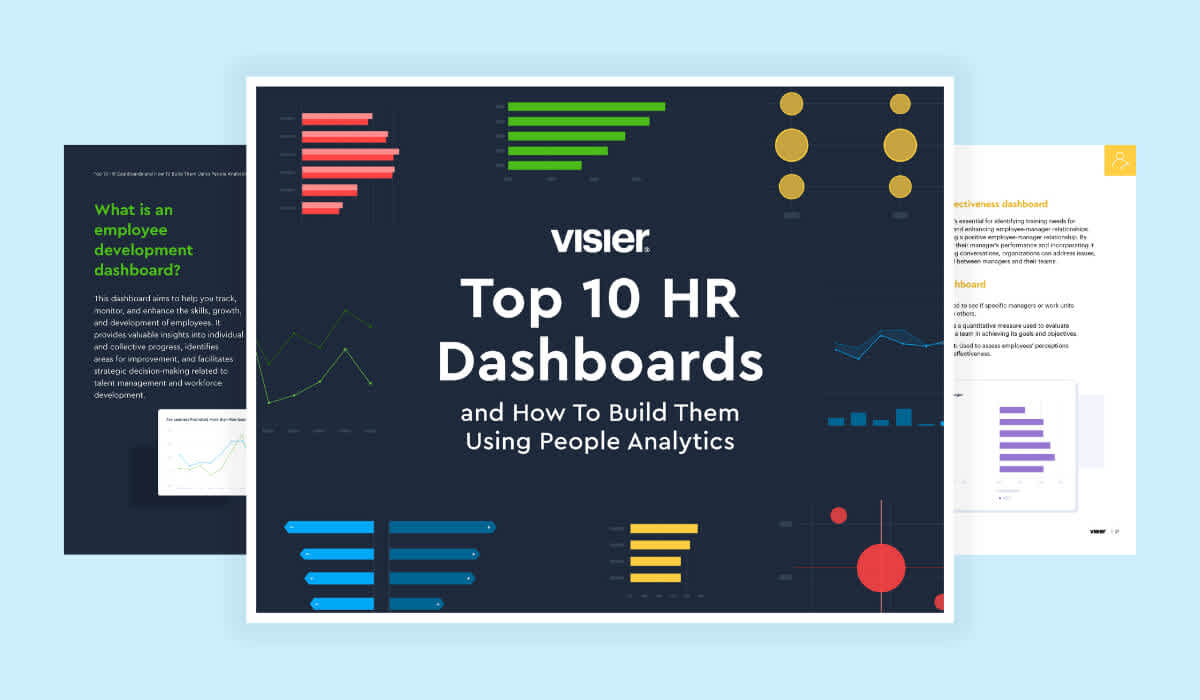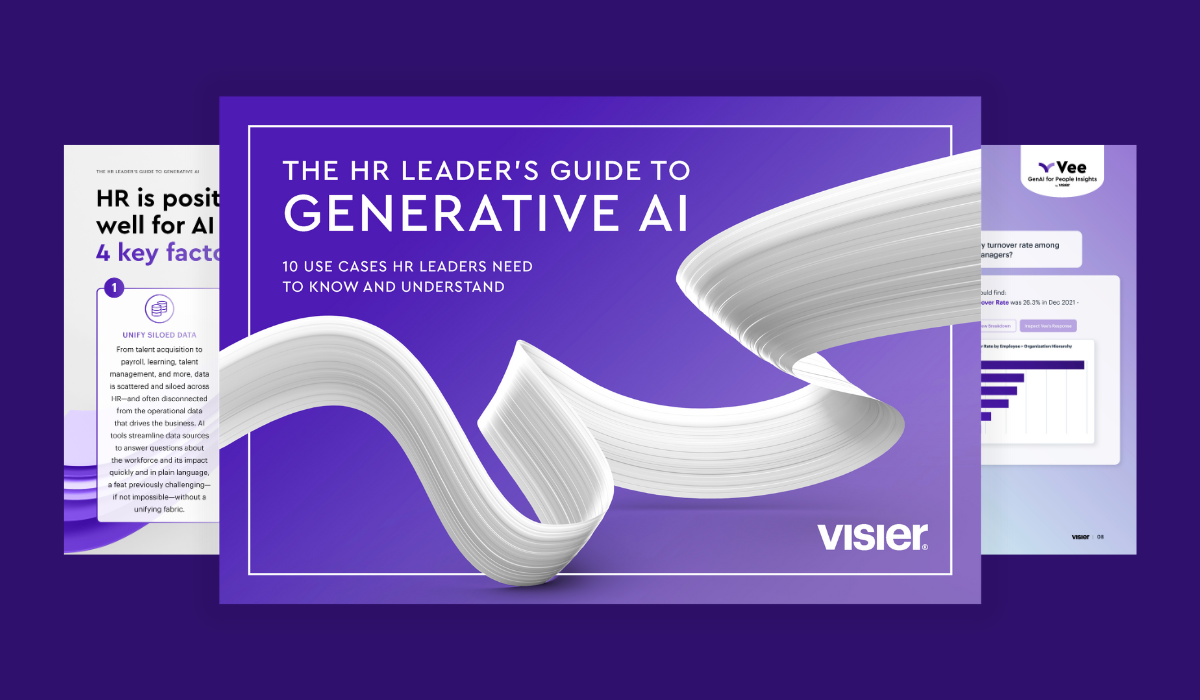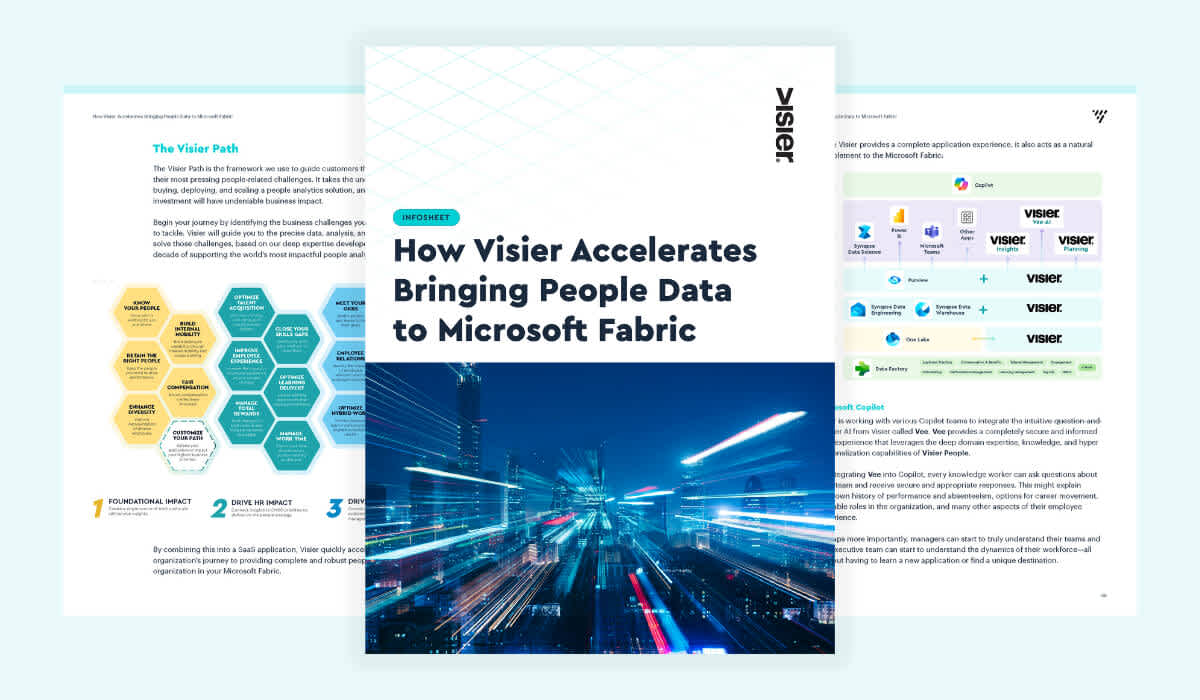The Key to Better Sales Performance? Combining People Data and Work Data
Unlock critical sales productivity insights by connecting people data to sales data. Here are three essential sales performance questions you can answer with people analytics.

Sales organizations deeply depend on individual employees' performance. Despite technology, training, and enablement tools, success ultimately comes down to sales representatives generating opportunities, working deals, and closing them on time. Surprisingly, many sales leaders don’t examine the human element of what makes sales reps productive and successful at creating quality pipeline, moving deals through the funnel, and converting them to close.
Human factors are the missing piece from most sales insights
Think of the sales process as a system that takes in specific inputs and produces measurable outputs, just like any other business process. In sales, the outputs include sales activity metrics, pipeline growth, and revenue. When it comes to inputs, essential human factors are often missing from traditional sales analytics. These include critical activities like hiring the right people, designing effective onboarding programs, and creating fair, equitable compensation structures that motivate employees.
This is a significant missed opportunity. With the right insights, Chief Revenue Officers and sales leaders alike could dramatically improve their teams' productivity and performance by developing a clearer understanding of how talent strategies affect their sales outcomes.
This is Visier’s Workforce AI Edge in practice: using AI and analytics to unlock the business-transforming potential of fusing people data and work data.

Combining sales data with people data requires the right technology
To effectively combine people data with work data, organizations need a platform with a purpose-built data model that can ingest data from multiple sources. Visier’s analytical engine and prebuilt data models are remarkably extensible so you can easily add work data from your CRM to provide deeper insights into business performance.
Let's explore a powerful tool for sales leaders within Visier. It combines Visier's standard people data solution which integrates data from systems like your HCM (e.g., Workday), learning management (e.g., Cornerstone), talent acquisition (e.g., SmartRecruiters), and engagement platforms (e.g., Qualtrics)—with work data from platforms such as Salesforce, Clari, and Gong. Below are three specific examples of how combining people data with sales data unleashes powerful insights that can improve sales performance.
1. Understand how sales rep tenure affects sales performance
Question: Are we identifying enough new opportunities that can turn into new revenue?
Each sales rep is responsible for sourcing and developing leads with the goal of closing deals to generate revenue. Success depends heavily on human factors. Let’s start with tenure. With the right analytics, leaders can determine whether a salesperson’s level of experience plays a role in their ability to generate new leads and take action accordingly.
For example, if the data shows that experienced reps generate significantly more pipeline than inexperienced ones, HR can take actions such as improving training or creating a mentor program to ramp up inexperienced reps faster. Additionally, leaders can work with the compensation team to understand the appropriate ramp period for new hires before they take on a full monthly or quarterly quota.
This type of insight would not be possible using traditional sales analytics tools, since they aren’t equipped to examine the people side of the equation.

2. Mitigate sales pipeline risks from employee resignations
Question: Are we on track to close enough deals to meet our sales targets?
Sales is typically considered a high-turnover department, with turnover rates around 20-30% in most medium-sized companies. When a sales rep resigns, their active deals can stall or even drop out of the pipeline, despite our best efforts to keep them moving. Even worse, a new hire may spend months on sales activities without producing results, leaving the company without a viable pipeline for others to take over.
Predicting an employee’s resignation risk is a popular use case in Visier. Now, by layering sales data on top, people analytics teams can monitor each representative's sales forecast alongside their predicted resignation risk. This enables them to alert sales leadership when new hires aren't building enough pipeline to justify continued employment, allowing managers to either improve performance or terminate employment before paying out costly MBO checks.
Additionally, if analytics reveal that several sales representatives with large pipelines also have high resignation risk, leadership can take preventative action. This might include ensuring deal knowledge transfer to direct managers about key prospects and opportunities, or implementing retention strategies such as SPIFFs, career development discussions, or compensation adjustments. Given the critical importance of meeting quota targets, sales leaders must proactively protect their team's pipeline and performance through these risk mitigation strategies.

3. Optimize sales onboarding to maximize productivity
Question: How long does it take for new sales hires to reach full productivity?
When a new rep joins a company, onboarding quality can have a huge impact on how productive they become–and how quickly.
Sales leaders must strike a delicate balance in their onboarding programs. On the one hand, every seller needs a thorough understanding of the products to sell effectively, but excessive training requirements can prevent them from engaging in valuable selling activities during their critical early months.
By analyzing the correlation between onboarding program completion and first-year sales performance, organizations can evaluate their training effectiveness. If the data shows that completing onboarding doesn’t improve performance, this indicates a need to restructure the program. Potential improvements might include redesigning the curriculum to better drive early performance or distributing training across several months, allowing representatives to gain timely insights while actively building their pipeline.

Two real-world use cases
Let’s look at a couple of real-world use cases from Visier customers who are looking to combine sales data with people data to solve a specific problem.
U.S.-based media company
This company employs well over a thousand salespeople, and nearly all of their compensation is based on commission. New sellers aren’t expected to close deals during their initial ramp-up period. During that time, they’re “floated” a salary with payouts based on how well they’re building pipeline.
However, this company has observed an alarming trend: around 40% of first-year representatives leave the business. They collect a salary for six to 12 months without closing any deals and then quit. For the company, all the costs and effort of ramping them up are lost. To mitigate this, they’re bringing sales activity data into Visier alongside their people data. In doing so, they hope to identify the activities and behaviors of people who do go on to become productive salespeople and clone that behavior, training, and activity across other new hires. They're seeking to answer questions like:
Are there patterns in their prospecting, sales call participation, or training material consumption?
Who recruited them?
Is there a trend on what colleges or companies they’ve come over from?
Is some training helpful, but some courses too much too soon?
What is the right manager-to-rep ratio, and have certain territories historically been more successful than others?

Financial services and insurance company
This long-established firm also has a 100% commission comp structure. They have a generation of experienced sales managers who are effective at hiring new advisors (sales reps) straight out of college and coaching them to productivity. If reps do make it past the two-year mark, they’re sure to stay for the next decade. Unfortunately, the company is facing a wave of upcoming retirements among sales managers, which poses a significant risk to seller productivity and pipeline health. With sales manager effectiveness being crucial to business performance and revenue, the question is: Will the next generation of sellers promoted into management be as successful as their predecessors?
This company needs to identify the next generation of capable, effective managers and ensure they have the necessary training and support to mitigate risks to the company’s total pipeline. To do that, they’ll use Visier to pinpoint the sales behaviors of successful managers, including tenure, movement/path to role, skills, territory, and performance to look for the individuals who are promotion-ready and more likely to succeed in this next challenge.
The status quo isn’t good enough
While some organizations may hesitate to embrace new analytical approaches, viewing them as untested or too different, it's important to consider the broader context of technological evolution.
For decades, organizations have practiced traditional business intelligence: calculating metrics, creating visualizations, and building dashboards. Sales teams track revenue, win rates, and basket sizes, while accounting departments monitor expenses, depreciation, and capital return ratios. We’ve become very good at calculating and analyzing outcomes. Why do we bother examining those metrics? To improve those outcomes.
Today, business performance is mostly the result of knowledge work performed by people. Meaningful improvement in business outcomes can only come from enabling people to work more effectively and efficiently. This means tracing business results back to their source—what work was performed, how it was executed, and who completed it—and making rigorous decisions that drive impact.
Getting started
With Visier People Extend, Visier customers can integrate work data with people data, allowing teams to go beyond traditional metrics and truly understand how people impact performance. Visier People Extend allows you to build extensions to the Visier People® HR-centric data model and gives you access to a set of starter applications, including the sales examples above, to accelerate your analytics buildout. If you’re ready to see how data-driven insights can make your organization more effective, our solutions are here to help.



